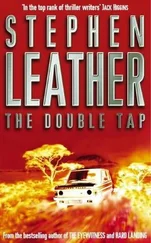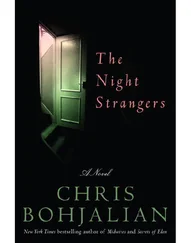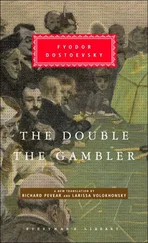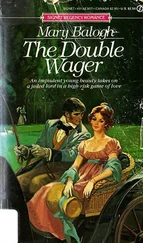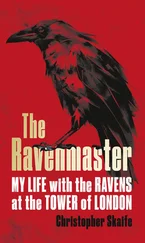And yet as approximate as the time line was, it was helpful nonetheless.
Crocker Photos: Rough Dates
Mid-1950s:
Chuck Berry
Robert Frost
Jazz musicians (many photos)
The Brooklyn Bridge
Muddy Waters
Plaza Hotel
Late-1950s:
Beatniks (three)
Eisenhower (at United Nations?)
Real Gidget (Kathy Kohner Zuckerman)
Hair dryers
Autos (many)
Washington Square
Train station, West Egg
Cigarettes (in ashtrays, on tables, close-ups in people’s mouths)
Street football underneath Hebrew National billboard
1960/61:
Julie Andrews (Camelot)
Girls with Hula-Hoops
Early 1960s:
Sculptor (unknown)
Paul Newman
Zero Mostel
More autos (a half-dozen)
Manhattan cityscapes (including Chrysler building)
New York Philharmonic
IBM typewriter (three)
Greenwich Village street scenes (four)
Chess players in Washington Square
1964:
World’s Fair (a half-dozen shots, including the Unisphere)
Freedom march, Frankfort, Kentucky
Martin Luther King (at Frankfort march?)
Lyndon Johnson (in big hat in a ballroom)
Dick Van Dyke
Mid-1960s:
Eartha Kitt
Bob Dylan
Myrlie Evers-Williams
Brownstones (in Brooklyn?)
Mustang in front of Marshfield estate (car introduced in 1964)
Midwestern arts-and-crafts house (looks like Wright)
Nancy Olson
Fifth Avenue bus
Modern dancers (a series)
Late-1960s:
Jesse Jackson
Coretta Scott King
Lava lamps (many - a series? for an ad?)
Jazz club (a series)
Joey Heatherton (I think)
Sunbathers at Jones Beach
Central Park series (picnics, baseball, the zoo, hippies)
Paul Sorvino (and Mira?)
Love beads and peace medallions
Early-1970s:
Flip Wilson
Unknown rock band
Actors: Jack Klugman and Tony Randall
World Trade Towers
Wall Street (many)
Main Street, West Egg
Ray Stevens (maybe)
Liza Minnelli
Jazz trumpeter
Late-1970s (or later!):
Valley of Ashes office park (not real name)
Plaza Hotel (again)
Jewelry box (may be art deco, but on negative strip with Valley of Ashes office park)
East Egg train platform
East Egg shoreline
West Egg shoreline
My old swim club (Gatsby’s old house)
Crab apple tree (a few prints, one with a little pyramid of apples beside it)
Late 1990s/Early 2000s:
Underhill dirt road scenes (two with a girl on a bike)
Stowe church
Waterfall
Dog by bakery
Mount Mansfield ski trails (in summer)
She noticed that either Bobbie stopped working through much of the 1980s and 1990s, or those images had been lost. She also found it interesting that he seemed to have returned with increasing frequency as he grew older to East and West Egg and the Valley of Ashes. It was possible that he had been returning there all along, annually perhaps-she had that photograph of the West Egg train platform with cars nearby from the late 1950s-and those negatives and prints had simply disappeared over time. But she had a feeling this wasn’t the case. She imagined him in his mid- to late-fifties, retracing his steps and the swath left behind by his parents. She noted how he had photographed the Plaza at least twice, and she was sure that he couldn’t help but see through the walls of the hotel to the steamy afternoon when his mother’s lone (at least Laurel believed it was lone) infidelity had become clear to his father.
She gazed at each of the images before she packed them safely away in the portfolio case. What could have taken ten minutes took close to ninety. Initially, she presumed she was searching each photograph for whatever it was that Pamela Marshfield or Terrance Leckbruge so desperately wanted-the clue to their impenetrable interest. She was looking as well for the devil: a person, an image, a carnival freak. Wasn’t that what Pete Stambolinos had said? There might be a photo of a carny. But there wasn’t, at least not yet. There certainly weren’t any images from the county fair held annually near Burlington. There weren’t even any images that might be considered in the slightest way threatening.
And so, increasingly, she found herself studying the compositions themselves, Bobbie Crocker’s use of light and dark, and the way he was capable of making even the most journeyman subjects fascinating: a typewriter. A cigarette. Men playing chess. She feared that her printing wasn’t doing them justice. He deserved better.
After she had boxed the prints up, she decided she couldn’t bring them back home. Yes, it had only been a squirrel in the apartment today. But tomorrow? Other people wanted these images; Bobbie had understood that. It was why he had shared them with no one. And so she viewed the squirrel as a sign sent by a guardian angel. The message? Put those pictures someplace safe.
And that place certainly wasn’t going to be her office at BEDS. She trusted Katherine, but not the lawyers. David’s co-op was a possibility, but that might endanger his little girls if someone broke in. And while his office would be secure-it was impossible to venture inside the newspaper without either an ID card with a strip that could be read by the scanner or being buzzed inside by the receptionist-that security might also preclude her from accessing the materials when David wasn’t there. She knew some of the receptionists, but not all.
Briefly, she even considered Pete Stambolinos, appreciating the irony of hiding the photos in the very same building in which they had moldered the last year of Bobbie Crocker’s life. But it didn’t seem especially prudent to turn them over to a man who had never numbered levelheadedness among his personal strengths.
She needed an acquaintance, someone who Marshfield or Leckbruge would not associate with her, and decided she should try Serena Sargent. She was going to Bartlett tomorrow to visit the Congregational church that Crocker’s old editor may have attended, but she figured she could leave the prints she had already made with the waitress when she was done. She could visit the woman at her home in Waterbury or, if Serena was working, she could stop by her diner in Burlington in the afternoon. Meanwhile, she would keep the unexamined negatives-and, in truth, there were no more than three dozen strips left to print-with her wherever she went.
PATIENT 29873
It would be helpful to know the most recent or pertinent stressor.
In the meantime, it remains difficult to keep a conversation on track. Patient has moments of marked conversational clarity followed consistently by a delusional digression that derails our progress. Still unwilling to discuss treatment and aftercare plans.
From the notes of Kenneth Pierce,
attending psychiatrist,
Vermont State Hospital, Waterbury, Vermont
Читать дальше




